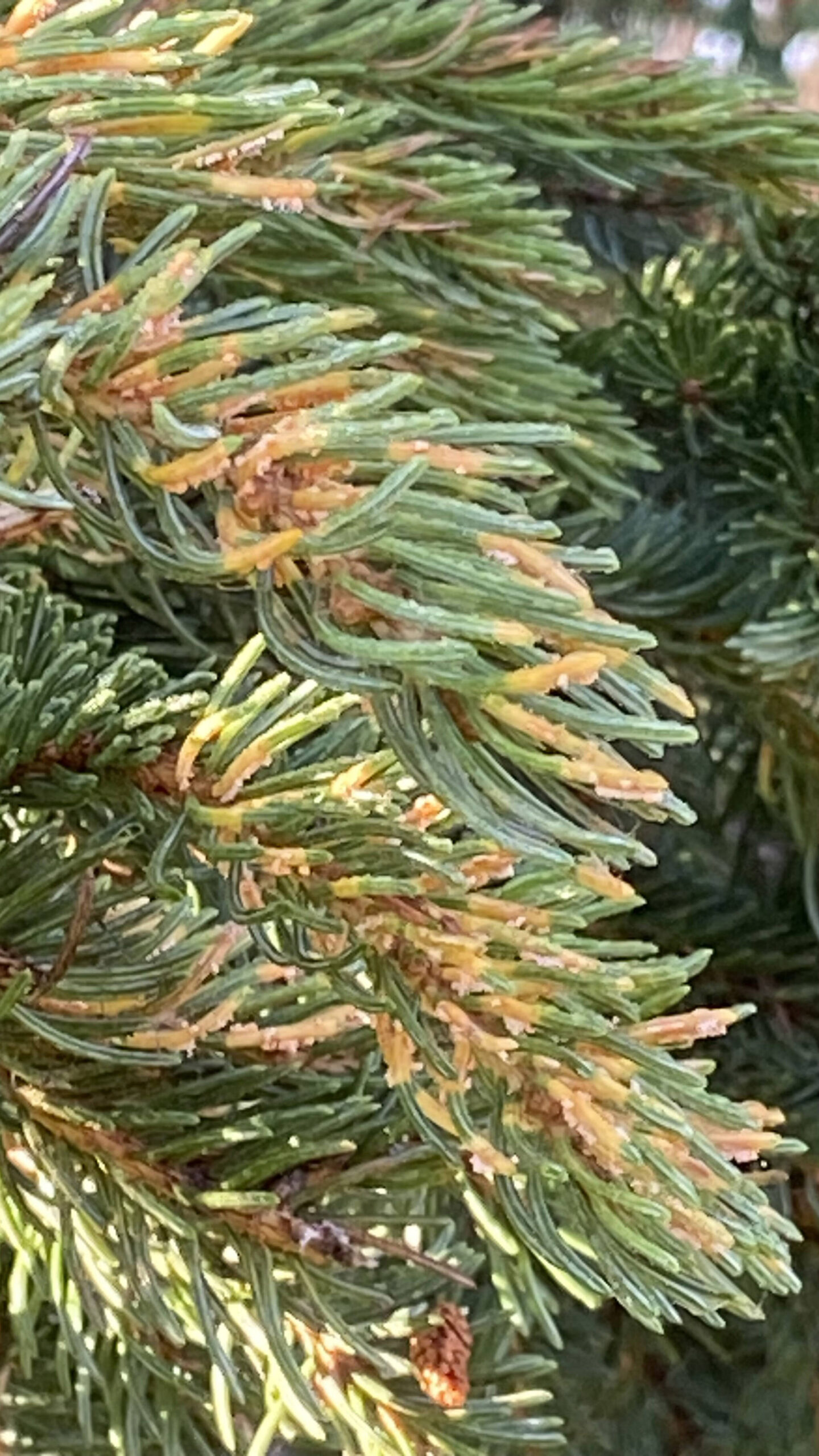By Matt Bowser and Kris Inman
Peninsula Clarion Contributors
Much like 2018, the orange tips of young spruce trees are catching people’s attention and reminded me of 2018 when a co-worker asked, “What is that?” and pointed down to where it looked like someone had marked the ground beside the Skyline Trail with neon orange spray paint.
It turned out to be an orange powder from a fallen spruce cone. We looked around and saw strangely stunted, bright orange spruce tips that dropped copious orange powder when touched. These were spores of a rust fungus.
Rust fungi, named for the rust-colored spores, include thousands of species, all parasites wholly dependent on their plant hosts. Rust fungi are familiar diseases on local spruces, with multiple species of spruce rusts known in our area. Each kind of rust fungus usually infects only one to a few species of plants.
In 2018, these bright orange spruce tips differed from anything I could find in the field guides. I sent pictures to Dr. Lori Winton, then Forest Pathologist at the U.S. Forest Service’s Forest Health Protection office in Anchorage. She quickly identified the photos as spruce tip rust, Chrysomyxa woroninii.
This year the fungus is its more familiar cousin, Chrysomyxa ledicola, which was reported on the Kenai Peninsula in 2017 and 2020. While rarely resulting in tree mortality, the year’s new growth will die and fall off, leaving this cohort of needles missing from the trees. Not to worry, healthy buds will form on the end of the branches, and the spruce will produce needles in the following year.
Although Chrysomyxa woroninii fungus was first described in 1903, only recently have the details of its biology been worked out. To complete its life cycle, both species of spruce tip fungus require two host plants: a spruce and bog Labrador tea (Ledum groenlandicum), a shrub common in our area’s peatlands and boreal forests.
Spruce tip rust has five spore stages, and only three spread the fungus. Always present, cool, wet summers assist the fungus in making it through its entire life cycle.
It begins its life cycle in early summer as a white blister in the spruce that infected that year’s growth of spruce needles. Once infected, the white spore-producing blisters (aecios) intensify in color and form waxy looking yellow to orange aeciospores at the spruce tips.
By late summer, infected spruce tips have started to change from orange to brown and finally to black as the tips die and release a special kind of spores called aeciospores. The fungus does not continue living in its spruce host but dies as the infected tips dry up. Nor can the aeciospores reinfect spruce.
Instead, the aeciospores spread by wind, water or animals, and infect the Labrador tea. The aeciospores germinate, sending out filaments that penetrate and ramify through the host plant’s tissues. The fungus grows by extracting nutrients from its host’s cells.
The rust lives through the winter inside the leaves of the Labrador tea. Under mild winter conditions, Uredinia may be produced on the upper and lower sides of the leaf and release uredospores that reinfect other leaves of the Labrador tea.
In the spring, these spore-producing structures release different spores called teliospores. The yellow-orange teliospores germinate and release yet another kind of spores called basidiospores, which can only infect spruce.
Basidiospores germinating on spruce send out filaments that penetrate the spruce, presumably through microscopic holes on the needles called stomata. This leads to a local systemic infection, where the fungus grows within the tissues of a new spruce tip bud.
Once again, showing up a white-yellow blister in spruce needles and occasionally on cone scales. By summer, the blisters burst, releasing yellow-orange aeciospores to disperse and, under the right conditions, infect Labrador tea.
Throughout its range in the Old World and New World boreal forests where spruces and Labrador tea occur, Chrysomyxa woroninii of 2018 is seldom seen, while Chrysomyxa ledicola may become more frequent under changing conditions of cooler rainy summers, allowing it to complete all stages of its life cycle.
While rarely leading to spruce tree mortality, infection results in twig and branch dieback.
If you have not yet seen spruce tip rust fungus, look at this phenomenon soon before these orange tips turn completely brown and are only a memory. While Chrysomyxa woroninii is rarely seen in our area, this is the third year its cousin, Chrysomyxa ledicola, has been seen in the wetter, cooler summers of 2017, 2020 and 2023. One of many cycles of nature, it may become a more frequent event.
Matt Bowser, fish and wildlife biologist, and Kris Inman, supervisory wildlife biologist at the Kenai National Wildlife Refuge, updated this article from an article Matt wrote in 2018. You can find more information on the Refuge at http://kenai.fws.gov or http://www.facebook.com/kenainationalwildliferefuge. Also, look for Refuge Notebook Articles on the first and third Fridays of each month or Find past Refuge Notebook articles (1999–present) at https://www.fws.gov/kenai-refuge-notebook.


